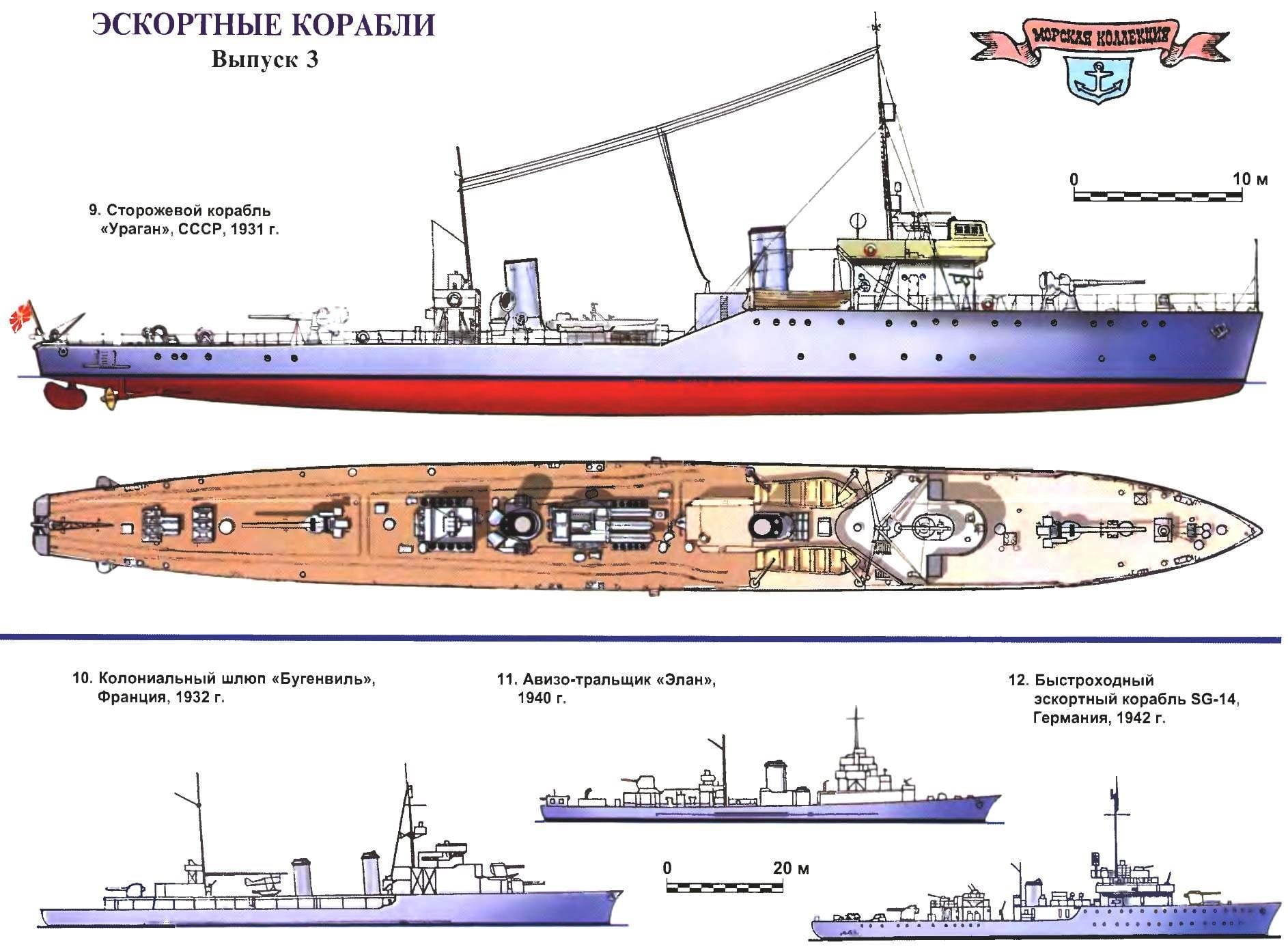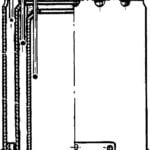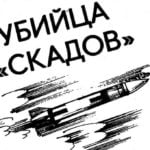 The first world war, two revolutions, civil war and destruction… the Trials that befell Russia in the first quarter of the twentieth century, it seemed, forever had to delete it from among the great Maritime powers. By the mid 20-ies of even the most capable Naval forces in the Baltic sea consisted in the ranks of only eight destroyers-“Novikov”. With the most acute shortage of vehicles for daily service — minesweepers, chokes, patrol. Combat experience witnessed in the coastal waters and restricted Maritime theatres of the inconspicuous role of these warships can not be overestimated.
The first world war, two revolutions, civil war and destruction… the Trials that befell Russia in the first quarter of the twentieth century, it seemed, forever had to delete it from among the great Maritime powers. By the mid 20-ies of even the most capable Naval forces in the Baltic sea consisted in the ranks of only eight destroyers-“Novikov”. With the most acute shortage of vehicles for daily service — minesweepers, chokes, patrol. Combat experience witnessed in the coastal waters and restricted Maritime theatres of the inconspicuous role of these warships can not be overestimated.
It is therefore not surprising that the rebuilding of the fleet in our country began precisely with the project of the patrol ship (SKR). In difficult economic conditions, the red Navy was a relatively small and cheap craft, operation of which required less cost than the already rather worn-out destroyers.
However, originally conceived not even a patrol boat and patrol boat. In 1922, the Naval headquarters, the Russian Federation has defined its requirements: weapons of the 102-mm guns and depth bombs, speed 30 knots. The absurdity of installing a long arm chetyrehmetrovy Obukhov factory (and other modern guns at that time simply did not exist) in a small boat it became evident before the preparation of drawings, and three years later the composition of artillery in the terms of reference have changed. Now the armament consisted of light anti-aircraft guns and machine guns, and two torpedo tubes, mines, and depth bombs. Speed increased to 35 knots. This strange, although quite a curious hybrid of destroyer and hunter submarines also have not reached the stage of sketches. In order to bring development to the slipway, required a lot of engineering work.
She took established in 1923, the Scientific and technical Committee of the Navy Department, the direct successor of pre-revolutionary MTK. Shortage of personnel (in the Committee there were only 30 people) and the lack of a clear understanding of the leadership of the red Navy what you need to build, resulted in an amazing range of variety of options. In 1926 remains the most reasonable and balanced of them — a patrol boat with a displacement of 650 t with a speed of 30 knots, a steam-turbine plant and armament of two or three 102-mm guns, antiaircraft guns, machine guns, and three-pipe 450 mm torpedo tubes. At the stage of detailed study of the main problems was the selection of a suitable gun (a type of artillery during the design and construction was changed four times) and insufficient capacity of the power plant (as shown by tests of models in the pool, engines to 6800 HP could provide not more than 26.5 per node).
According to the plan by 1929 it was planned to build six units in Leningrad and two in Nikolaev, at the plant named after A. Marty. The progress of the works was complicated by the traditional domestic industry issues: lack of qualified personnel and the continuous “improvements” of the project. Interchanged the cellar and pantry, Paravani and racks of depth charges, the mast… But the greatest trouble was the error of calculation of durability. Had to reinforce the hull design that has contributed to the construction overload. Eventually, in 1929, succeeded in launching only three patrol. Then followed the first cleaning 30 years, which also contributed to the speed of construction. Only on 12 September 1931 in the Naval forces of the Baltic sea became the first Soviet TFR “Hurricane.” It was followed by “Vortex”, “Typhoon”, “Cyclone”, “Storm”. The sailors immediately dubbed the new series “the division of the bad weather”.
The service of the firstborn of the Soviet shipbuilding in 30-e years were very intense. Before the start of the great Patriotic war patrol completed a number of upgrades: 102-graph paper have given way to new 100-mm guns in the units B-24-BM-protected with light shields and having long range shooting. Later changed and anti-aircraft weapons: instead of the ineffective 45-mm semi-automatic machines and machine guns of rifle caliber mounted modern 37-mm machine guns and twin heavy machine guns. Not forgotten and the struggle against the main enemy — submarines. At the stern there is an additional mortars, a stock of depth charges brought up to 34 pieces, and in the bow of the hull mounted samplegetinfo station “Poseidon.” Full update hosted communications and navigation.
Unfortunately, all of these timely and logical steps led to a marked overload, compounded by the fact that the case is extremely lightweight in construction, it was necessary for me to back up. Displacement increased to almost 600 tons and speed fell to 23 knots. The ships were quite maloustoichiv — so much so that I could take mine to the upper deck only in the presence of the tanks full of fuel or the replacement of its water.
Vehicles “division of the bad weather” became active participants of the war. “Cyclone” in August 1941, along with other ships of the Baltic fleet tried to break from Tallinn to Kronstadt, but struck a mine and sank. “Vortex” went to the bottom of the wall in Kronstadt after the attack of German aviation in the next month, but after lifting the siege of Leningrad was raised and commissioned. The same fate befell the “Tornado” in Murmansk. A direct hit by bombs in December 1942, inflicted heavy damage, but rescuers pulled off quite a feat: in the harsh winter conditions of the Arctic in just two weeks they raised patrol. In 1944, all ships of the series, also deceased, “Cyclone”, was in the ranks. The “Typhoon” was a conversion to a minesweeper squadron. Instead of the obsolete torpedo tubes it has installed equipment for trawling newfangled magnetic and acoustic min.
The project is the first relatively large Soviet warship received at the time quite controversial. On the one hand, indicated that its performance characteristics are hardly consistent with the pre-war destroyers of the type “PoA”, built almost a quarter of a century before. (Such a statement could hardly be taken as the equipment and light weapons, “Hurricane” is completely different from the pseudo-prototype.) On the other hand, patrol fared well in the service, and in some aspects was even the heralds of the new-type warships — escort destroyers, which soon widespread in the navies of the major Maritime powers.

9. Patrol ship “Storm”, the Soviet Union, 1931
Built at the Northern shipyard in Leningrad. The normal displacement of 470 tons, full 535 t maximum Length of 71.5 m, a width of 7.24 m and draft of 2.1 m. Capacity twin-shaft steam turbine 6850 HP, speed 26 knots. Armament: two 102-mm and four 45-mm guns, two machine guns, one three-pipe 450 mm torpedo tubes, up to 48 small or 16 large mines, up to 40 depth charges. Only in 1931 — 1938 he built 18 units.
10. The colonial sloop Bougainville, France, 1932
Built by company “e forges Chantiers de La Gironde”. Displacement standard, t 1970, 2160 normal t full t 2600 maximum Length of 100.7 m, width 12.7 m, draft 4,5 m. Capacity twin-shaft diesel installation 3200 HP, speed 18 knots. Armament: three 138-mm guns, four 37-mm gun and six machine guns, 50 min, one seaplane. Only in 1931 — 1940 built 8 units.
11. Aviso-minesweepers “Elan”, France, 1940
Built at the shipyard of the Navy in Lorient. The standard displacement of 630 tons, 750 tons normal full 900 so the Length of the longest 78,31 m, width 8.7 m, draft 3,28 m. Capacity twin-shaft diesel installation 4000 HP, speed 20 knots. Armament: two 100-mm anti-aircraft guns, eight 13.2-mm machine guns, depth charges. Only in 1938 — 1940, laid down 22 units completed for the French Navy 13.
But this path of development escorts and protection was not the only one. Colonial powers had developed a completely different concept of a universal combat ships with similar purposes. For example, France, holder of the world’s second largest Empire, stretching along the shores of three oceans, had an acute shortage of ships for the “representative office” in their possessions. They played the role of old memos during the First world war, but they gradually kahlili, and their weapons did not meet the dictates of time.
So in the mid 20-ies started designing the combat units of a new type, able to perform role and a powerful gunboat, and the flagship of the colonies, and the personal, which could at the same time to make long crossings. Since most of the French possessions were located in the tropics, as one of the requirements were put forward good habitat conditions in a hot climate, which was to provide powerful ventilation and device for cooling of premises — now so familiar and so exotic in those days, the air conditioning system.
A new memo or “colonial sloops” as they are classified in the English-speaking countries not only very successful but also beautiful ships. After attempts of imitations of merchant ships during the First world war, they rather resembled in appearance a small cruiser. Almost cruising was and arms: 138 mm gun had a projectile mass of 40 kg and good ballistic performance, though (which is natural for a 2000-ton ship) their number was only a third of the regular artillery of the cruiser at the time. In fact, the reservation is also a little different from the protection of the first “Treaty” cruisers, it is almost deprived. “Bougainville” (new memos have received the names of famous French travellers, explorers and colonialists) it was limited to a slight cover of bridge and wheelhouse, as well as thin boards have deck guns.
The designers managed to fulfill almost all their tasks. Extensive facilities and good communication facilities could in the shortest possible time to turn any of the “colonial sloops” into the command post. There was even a seaplane, which could, if necessary, to explore, to adjust fire, and to deliver important messages. To provide a very decent cruising range, reaching 13 thousand miles, the designers used a diesel installation. However, the lack of domestic engines of this class were forced to buy them from the Austrian and Danish manufacturers. The test vehicles showed excellent performance, for three of the node exceeding the planned rate.
It is not surprising that Bougainville and his colleagues received a very good rating. Just before the outbreak of the Second world war it was planned to increase the number of units of a series to ten, however, new order has managed to Commission only one “La Grandier”; “Bots-Bopre” only managed to lower the water, and the construction of the “La Perouse” had to cancel. The war dealt a heavy blow and was in the ranks memos, and more all suffered at the hands of the allies and their own sailors. Shortly after the armistice between France and Germany in July 1940 the English submarine sank the “Riga de Genuie”, and four months later played out even more ridiculous drama. Off the coast of Africa near Libreville met her sister ship, both under the French flag, but owned by the now sworn enemies: Bougainville represented the Vichy government, and “Zavarian de Brazza” — Free France. Sailors had to shoot his own recent colleagues. In the end, “Bougainville” was sunk. During the landing of the British in Diego-Suarez in Madagascar “D Antraste” suffered so much that to restore later. No luck and “D Iberville”: he was at the wrong time in the wrong place — namely, in November 1942, in Toulon, and was destroyed for its sailors, not to fall into the hands of the Germans. At the end of the war it was followed by “Amiral Charnay”, flooded the command in Indochina. The remaining three units were widely used after the war. They were handed over on demolition only in 1957 — 1959.
It is clear that these the good judgment not well suited for escort and patrol service in the waters of the French, being too expensive and luxurious for that purpose. Therefore, already before the war was followed by laying a fundamentally different series of patrol type “Elan”. According to the plan they were intended primarily for minesweeping, although decent weapons, which included paired installing 100-mm antiaircraft guns, and 20-node speed did their optimum to escort convoys. To the German invasion most of the launched ships were able to leave their Bank and to “emigrate” to England, some of them without weapons. The British established their 102-the graph paper and 40 mm guns. Several unfinished patrol briefly got into the fleets of the enemies of Italy and Germany — though most of them did not have time to do any military campaign.
Another program for the expansion of the French forces escort also remained unfulfilled. It included the construction of a fairly large series of escort ships for the type of the British Corvette “flower” (we will tell in the future). The first four units were built in England; there they remained after the fall of France. Additional order for 18 ships were supposed to be equally divided between the shipyards of the allies, however, actually begun operation only four, and already part of the Kriegsmarine. The Royal air force had to deal with “traitors”, three of which went down in 1944. A kind of compensation was the transfer of eight “flayerov” the Free French forces. They fought valiantly in the ranks of the Union forces; two of them — “Aliss” and “Mimosa” — was killed in 1942 by torpedoes from German submarines.
V. KOFMAN



